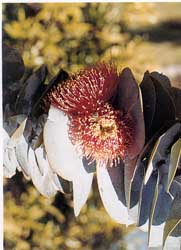 Become an Expert with Eucalypts
Become an Expert with Eucalypts
How to grow, propagate and use Eucalypts
This course could start your career in a nursery, a re-vegetation project, in agro-forestry
in rehabilitation projects etc.
An introduction to the genus Eucalyptus, covering identification, culture (propagation, soils, landscape uses, feeding), and uses. Throughout the course you build both a knowledge of the group as a whole, and of the range of species you can identify.